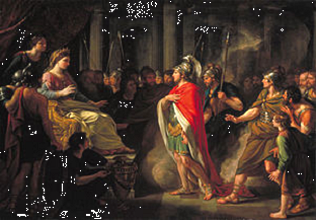Dan Locklair: Symphony No. 2, ‘America,’ Hail the Coming Day, Concerto for Organ and Orchestra, PHOENIX for orchestra. Slovak National Symphony Orchestra, Kirk Trevor, cond. (Sym. & PHOENIX), Michael Roháč, cond. (Cto for Organ), Peter Mikula, organ. Naxos 8559860 (American Classics series), © 2019; TT 63:03; $12.99, from Arkiv Music.
Composer Dan Locklair opens his enlightening notes about the works by insisting on their “roots” in his home state; hence I emphasize it in my title. These notes detail their dates of composition (2016, 2013, 2010, and 2007, in the recorded order, but the last is a re-working of one first written in 1979, reworked with an altered instrumentation in 1985, and yet again likewise in 2006). All are celebratory in nature and were commissioned for specific such events; the subtitle of the second is: “A Festive Piece for Orchestra,” and it was composed for the centennial of the union of the towns of Wilson and Salem on 12 May. All contain melodies or tunes that are carefully chosen for their significance and generally recognizable, though most are altered slightly.
The perhaps most interestingly structured one is the Organ Concerto, that uses the G-major triad: G – B – D, which symbolically represents God, and also uses its retrograde form: D – B – G, which spells dog, in its longest central Canto movement; Locklair composed the work while his faithful Shetland sheepdog was dying. The “America” symphony is divided into three movements with the names of three major holidays: Independence Day, Memorial Day, and Thanksgiving Day; the order perplexes because they are not in calendar or historical creation/establishment order, or in the order of the composition of their base melodies, all of which he identifies (as he does for all the works); he doesn’t offer an explanation.
Like all of Locklair’s music that I’ve heard, this is easy on the ear, tonal, pleasant, and rewarding, increasingly even, upon re-hearing/listening. It is also original, not imitative of anyone else’s, and modern but not disjointed or dissonant, so that in some ways it brings to my mind that of Robert Ward (1917-2013; no relation, though I knew him), but in a more common-ground, perhaps less intellectual, style.
Another composer who sprang immediately into my mind upon reading the names of the movements of Symphony No. 2 is Charles Ives, whose music was structured similarly and used similar materials, albeit it with more dramatic contrasts and unorthodox alterations of the melodies, that were surprising, if not shocking, upon their first hearings, although we have by now become accustomed to them. This was certainly because I recently heard a live performance of his Three Places in New England (“First Orchestral Set”, 1910-14, rev. 1929, 1 mvmt each), so I took out my two very different recordings of his orchestral music, entitled respectively A Set of Pieces; “Music by Charles Ives” (DG, 1994) and Charles Ives; An American Journey (SONY, 2002) to re-listen to them (long after I had settled on my title!); both include this work. The former also includes his Symphony No. 3, “The Camp Meeting” (1908-10; also with 3 movements, but No. 2 has 5); the latter includes choral works, such as “Psalm 100” and “Serenity,” and songs, such as “The Things Our Fathers Loved, and “General William Booth Enters into Heaven.” that are similarly inspired and constructed. His perhaps most famous works are Variations on America for organ (1892), though it is not included on either, and The Unanswered Question for strings, 4 flutes, and trumpet (1906, note the tripartite instrumentation) that is included on both. Then I re-listened (yet again) to Locklair’s.
The century-later lineage is pretty obvious, if one thinks about it, but the music does not imitate Ives’ in any way, so it is not striking until you’ve done what I did. Ives’ was often an ironic or satiric allusion to contemporary patriotic, chauvinistic even, and perhaps hypocritical, sentiments, that he did not consider appropriate, highlighting them as something excessive or misguided, of which to be wary; Loclkair’s is also patriotic, but not overtly or chauvinistically so, and sincerely honors inclusive attitudes and events. Note that his, like Ives’ (including his “Orchestral Set No. 2”; No 3 was never completed), is constructed in 3 movements. To confirm, I suggest you look at the list of Ives’ principal works. Locklair’s music is more straightforward, blends more into the culture rather than standing out from or commenting on it, and is perhaps less diverse, but is no less excellent or worthy, no less interesting and enjoyable, and hopefully as long-lasting in the repertoire of this century and the next as is Ives’. These performances are engaged and engaging; even if only one of the personnel (Trevor) is America-based, the spirit has been well captured.
Note from the composer’s publicist: Hear the Western Piedmont Symphony’s October 2017 World Premiere performance of Dan Locklair’s Symphony No. 2, “America”, conducted by their Music Director emeritus John Gordon Ross, recently broadcast on Carolina Live, at http://www.carolinalive.org/











